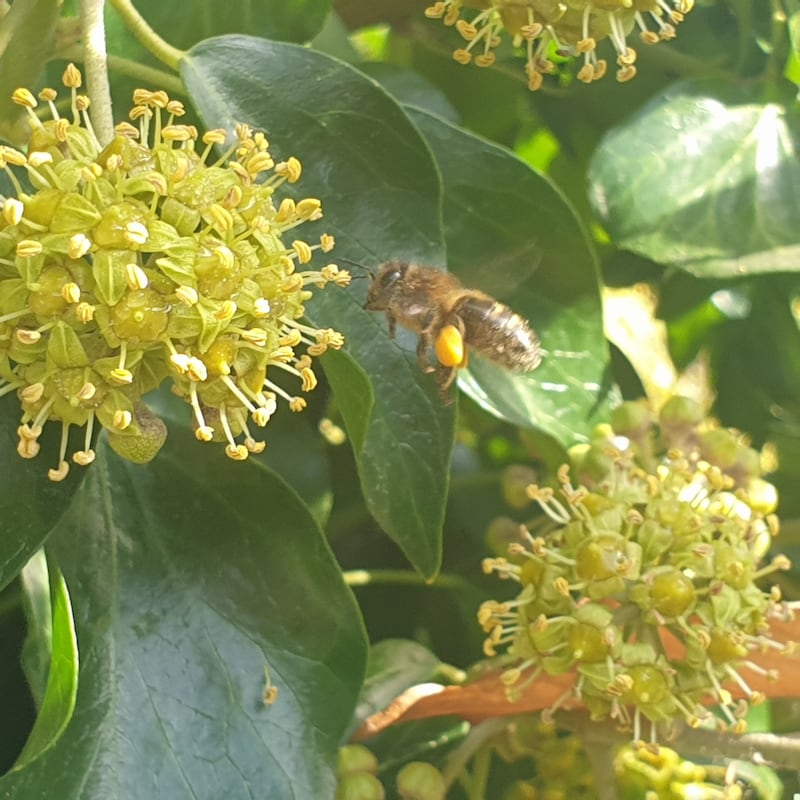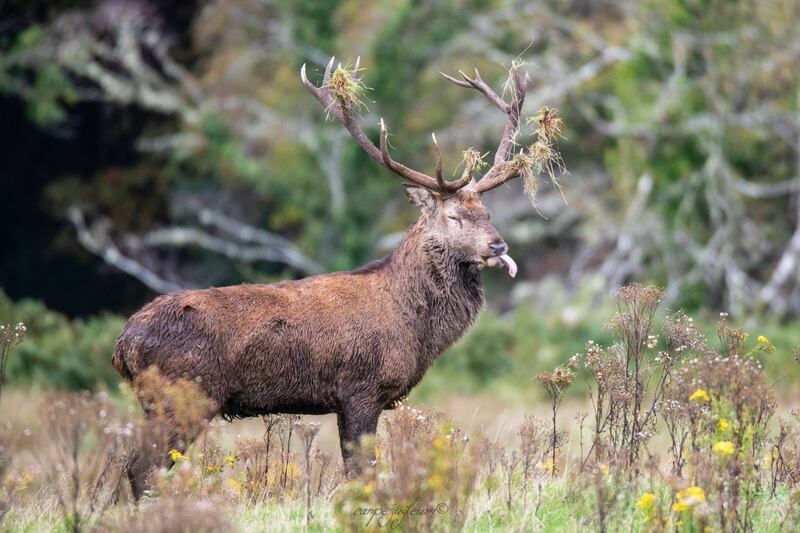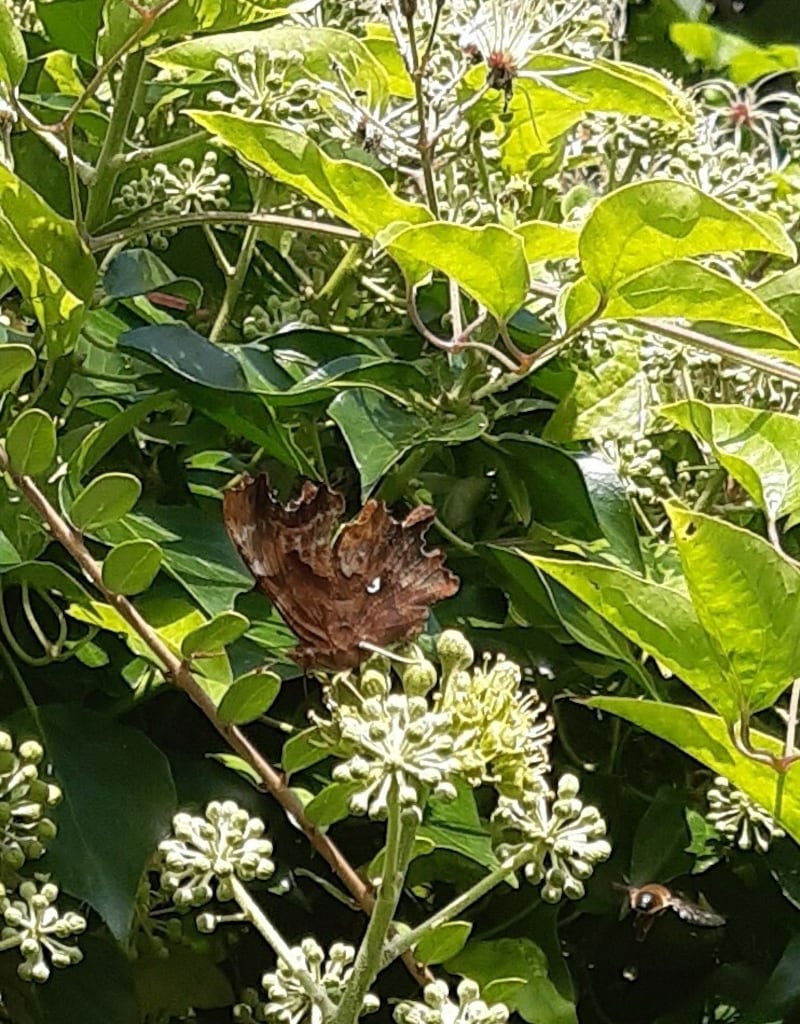These mushroom-like growths, which appeared recently in a planter pot home to a blueberry bush, are a mystery to me. They’re about 40 or 50mm across and contain fine dark brown dust. David Reddy, Dublin 4
This is a fungus, called an earthstar, that normally grows among leaf litter in deciduous woods. Some spores must have blown into your planter pot and the fungus is now established. It won’t harm your blueberry. It was first described as an earthstar in 1847 when one was found growing on the highest pinnacle of St Paul’s cathedral in London, suspended as it were, between the earth and the stars.

Ivy in the back garden was swarmed with bees in recent sunny days. What sort of bee is this and why is the ivy so maligned when it attracts so many bees? From Co Dublin.
It is not maligned by informed readers of this column. This is a honeybee stocking up with pollen. Ivy flowers also contain lots of nectar, which the bees make into honey to tide them over the winter. Ivy doesn’t strangle trees and its berries are food for birds in February.
Sally Rooney: ‘I enjoy writing about men ... the dangerous charisma of the oppressor class’
Alzheimer’s: ‘I’ve lost my friend and my companion,’ says Úna Crawford O’Brien of fellow Fair City actor Bryan Murray
Ryan Adams at Vicar Street: A gig that nobody will forget anytime soon, but perhaps not for all the right reasons
Meghan Markle’s new podcast: An ego-fluffing conversation underlining the culture gap between Ireland and the US

Do red deer like to pose during the rut? Dave Thompson, Co Kerry
They do, but not for photos. This stag is displaying to rivals that he means business and will take on all comers to get access to the hinds.

Here is unusual butterfly on ivy flowers? Robert O’ Neill, Co Clare
This excellent picture of the comma butterfly shows the white comma mark on its wing. It is feasting on the ivy’s abundant nectar – another example of the biodiversity that ivy attracts. Ivy definitely needs better PR.

Spotted this fantastic visitor to my garden. Can you identify what type of caterpillar it is? Colin Conway, Co Cork
This is the caterpillar of the pale tussock moth, which feeds on the leaves of deciduous trees and appears in gardens and hedgerows. The hairs can cause irritation if the caterpillar is handled. The birds know very well to stay away from it – the yellow warning colours reinforcing the message of unpalatability.
Have you a nature query, observation, or photo you would like to send to The Irish Times? Please submit it, with a location, via our website www.irishtimes.com/eyeonnature














